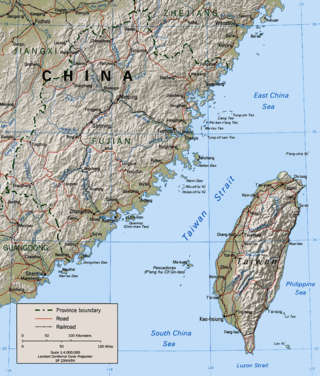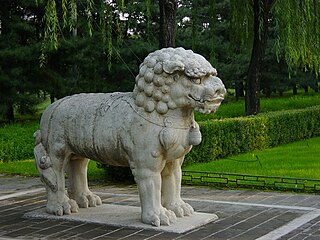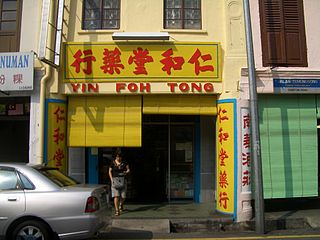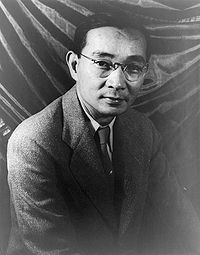Hanyu Pinyin, or simply pinyin, is the most common romanization system for Standard Chinese. In official documents, it is referred to as the Chinese Phonetic Alphabet. It is the official system used in China, Singapore, Taiwan, and by the United Nations. Its use has become common when transliterating Standard Chinese mostly regardless of region, though it is less ubiquitous in Taiwan. It is used to teach Standard Chinese, normally written with Chinese characters, to students already familiar with the Latin alphabet. The system makes use of diacritics to indicate the four tones found in Standard Chinese, though these are often omitted in various contexts, such as when spelling Chinese names in non-Chinese texts, or when writing non-Chinese words in Chinese-language texts. Pinyin is also used by various input methods on computers and to categorize entries in some Chinese dictionaries. Hànyǔ literally means 'Han language'—meaning, the Chinese language—while pinyin literally means 'spelled sounds'.

Wade–Giles is a romanization system for Mandarin Chinese. It developed from a system produced by Thomas Francis Wade, during the mid-19th century, and was given completed form with Herbert A. Giles's Chinese–English Dictionary of 1892.
Mandarin Phonetic Symbols II, abbreviated MPS II, is a romanization system formerly used in the Republic of China (Taiwan). It was created to replace the complex tonal-spelling Gwoyeu Romatzyh, and to co-exist with the popular Wade–Giles (romanization) and Zhuyin (non-romanization). It is sometimes referred to as Gwoyeu Romatzyh 2 or GR2.

Yuen Ren Chao, also known as Zhao Yuanren, was a Chinese-American linguist, educator, scholar, poet, and composer, who contributed to the modern study of Chinese phonology and grammar. Chao was born and raised in China, then attended university in the United States, where he earned degrees from Cornell University and Harvard University. A naturally gifted polyglot and linguist, his Mandarin Primer was one of the most widely used Mandarin Chinese textbooks in the 20th century. He invented the Gwoyeu Romatzyh romanization scheme, which, unlike pinyin and other romanization systems, transcribes Mandarin Chinese pronunciation without diacritics or numbers to indicate tones.
Fanqie is a method in traditional Chinese lexicography to indicate the pronunciation of a monosyllabic character by using two other characters, one with the same initial consonant as the desired syllable and one with the same rest of the syllable . The method was introduced in the 3rd century AD and is to some extent still used in commentaries on the classics and dictionaries.

"Lion-Eating Poet in the Stone Den" is a short narrative poem written in Literary Chinese that is composed of about 94 characters in which every word is pronounced shi when read in modern Standard Chinese, a dialect based on the Mandarin Chinese spoken in Beijing, with only the tones differing.
Latinxua Sin Wenz is a historical set of romanizations for Chinese. Promoted as a revolutionary reform to combat illiteracy and replace Chinese characters, Sin Wenz distinctively does not indicate tones, for pragmatic reasons and to encourage the use of everyday colloquial language. Beifangxua Latinxua Sin Wenz, for Mandarin Chinese, was the original iteration, and a number of variations for various varieties of Chinese were developed by regional Sin Wenz associations.
General Chinese is a diaphonemic orthography invented by Yuen Ren Chao to represent the pronunciations of all major varieties of Chinese simultaneously. It is "the most complete genuine Chinese diasystem yet published". It can also be used for the Korean, Japanese, and Vietnamese pronunciations of Chinese characters, and challenges the claim that Chinese characters are required for interdialectal communication in written Chinese.

Romanization of Chinese is the use of the Latin alphabet to transliterate Chinese. Chinese uses a logographic script and its characters do not represent phonemes directly. There have been many systems using Roman characters to represent Chinese throughout history. Linguist Daniel Kane wrote, "It used to be said that sinologists had to be like musicians, who might compose in one key and readily transcribe into other keys." The dominant international standard for Standard Mandarin since about 1982 has been Hanyu Pinyin, invented by a group of Chinese linguists, including Zhou Youguang, in the 1950s. Other well-known systems include Wade–Giles and Yale romanization.
There are many romanization systems used in Taiwan. The first Chinese language romanization system in Taiwan, Pe̍h-ōe-jī, was developed for Taiwanese by Presbyterian missionaries and has been promoted by the indigenous Presbyterian Churches since the 19th century. Pe̍h-ōe-jī is also the first written system of Taiwanese Hokkien; a similar system for Hakka was also developed at that time. During the period of Japanese rule, the promotion of roman writing systems was suppressed under the Dōka and Kōminka policy. After World War II, Taiwan was handed over from Japan to the Republic of China in 1945. The romanization of Mandarin Chinese was also introduced to Taiwan as official or semi-official standard.
The spelling of Gwoyeu Romatzyh (GR) can be divided into its treatment of initials, finals and tones. GR uses contrasting unvoiced/voiced pairs of consonants to represent aspirated and unaspirated initials in Chinese: for example b and p represent IPA [p] and [pʰ]. The letters j, ch and sh represent two different series of initials: the alveolo-palatal and the retroflex sounds. Although these spellings create no ambiguity in practice, readers more familiar with Pinyin should pay particular attention to them: GR ju, for example, corresponds to Pinyin zhu, not ju.
Simplified Wade, abbreviated SW, is a modification of the Wade–Giles romanization system for writing Standard Mandarin Chinese. It was devised by the Swedish linguist Olov Bertil Anderson (1920–1993), who first published the system in 1969. Simplified Wade uses tonal spelling: in other words it modifies the letters in a syllable in order to indicate tone differences. It is one of only two Mandarin romanization systems that indicate tones in such a way. All other systems use diacritics or numbers to indicate tone.
The Cantonese Romanisation system known as Barnett–Chao is based on the principles of the Gwoyeu Romatzyh system (GR) developed by Yuen Ren Chao in the 1920s, which he modified in 1947. The B-C system is a modification in 1950 by K M A Barnett from Yuen Ren Chao's romanisation system. It was adopted by the School of Oriental and African Studies, London (SOAS).
Tone letters are letters that represent the tones of a language, most commonly in languages with contour tones.

The different varieties of Chinese have been transcribed into many other writing systems.
The phonology of Standard Chinese has historically derived from the Beijing dialect of Mandarin. However, pronunciation varies widely among speakers, who may introduce elements of their local varieties. Television and radio announcers are chosen for their ability to affect a standard accent. Elements of the sound system include not only the segments—e.g. vowels and consonants—of the language, but also the tones applied to each syllable. In addition to its four main tones, Standard Chinese has a neutral tone that appears on weak syllables.

Yi Zuolin, aka Yi Jianlou, was a Chinese linguist, educator and philanthropist. He made important pioneering contributions to the studies of modern Chinese phonetics, phonology and grammar.
The Yale romanization of Mandarin is a system for transcribing the sounds of Standard Chinese, based on the Beijing dialect of Mandarin. It was devised in 1943 by the Yale sinologist George Kennedy for a course teaching Chinese to American soldiers, and was popularized by continued development of that course at Yale. The system approximated Chinese sounds using English spelling conventions, in order to accelerate acquisition of correct pronunciation by English speakers.

The Concise Dictionary of Spoken Chinese (1947), which was compiled by Yuen Ren Chao and Lien Sheng Yang, made numerous important lexicographic innovations. It was the first Chinese dictionary specifically for spoken Chinese words rather than for written Chinese characters, and one of the first to mark characters for being "free" or "bound" morphemes according to whether or not they can stand alone as a complete and independent utterance.

Lin Yutang's Chinese-English Dictionary of Modern Usage, compiled by the linguist and author Lin Yutang, contains over 8,100 character head entries and 110,000 words and phrases, including many neologisms. Lin's dictionary made two lexicographical innovations, neither of which became widely used. Collation is based on his graphical "Instant Index System" that assigns numbers to Chinese characters based on 33 basic calligraphic stroke patterns. Romanization of Chinese is by Lin's "Simplified National Romanization System", which he developed as a prototype for the Gwoyeu Romatzyh or "National Romanization" system adopted by the Chinese government in 1928. Lin's bilingual dictionary continues to be used in the present day, particularly the free online version that the Chinese University of Hong Kong established in 1999.










